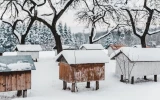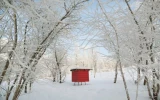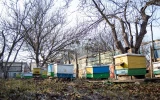9 Tips for Overwintering Weak Beehives Successfully
Overwintering weak beehives is an important part of ensuring your bees' survival. From freezing temperatures to managing pests and diseases, winter can bring various challenges. To help you successfully get your hives through the colder months, here are nine tips to help your bees not only survive the winter but also come out stronger and ready to produce honey in the spring.
To help weak beehives overwinter successfully, inspect them for damages, ensure an adequate food and water supply, control pests and disease, combine colonies, provide insulation and ventilation, control moisture and humidity, check the bees health and safety, monitor the temperature, and replace the queen bee.
These strategies focus on enhancing insulation, ventilation, and pest management to keep your bees safe despite harsh weather conditions. Since every beehive is unique, it's important to apply these tips according to your bees' specific needs and the climate of your region. Let's get your bees ready to thrive this winter.
Summary
- Ensure the hive is kept dry and draft-free, clean and free of debris, well-ventilated, and the entrance is not blocked.
- Provide the bees with supplemental feeding such as high-energy sugar syrup or specially made bee "candy".
- Wrap the beehive with insulating materials to protect it against harsh winter conditions.
- Monitor the hive’s weight and temperature regularly throughout the cold season.
- Protect hives against pests, diseases, and predators.
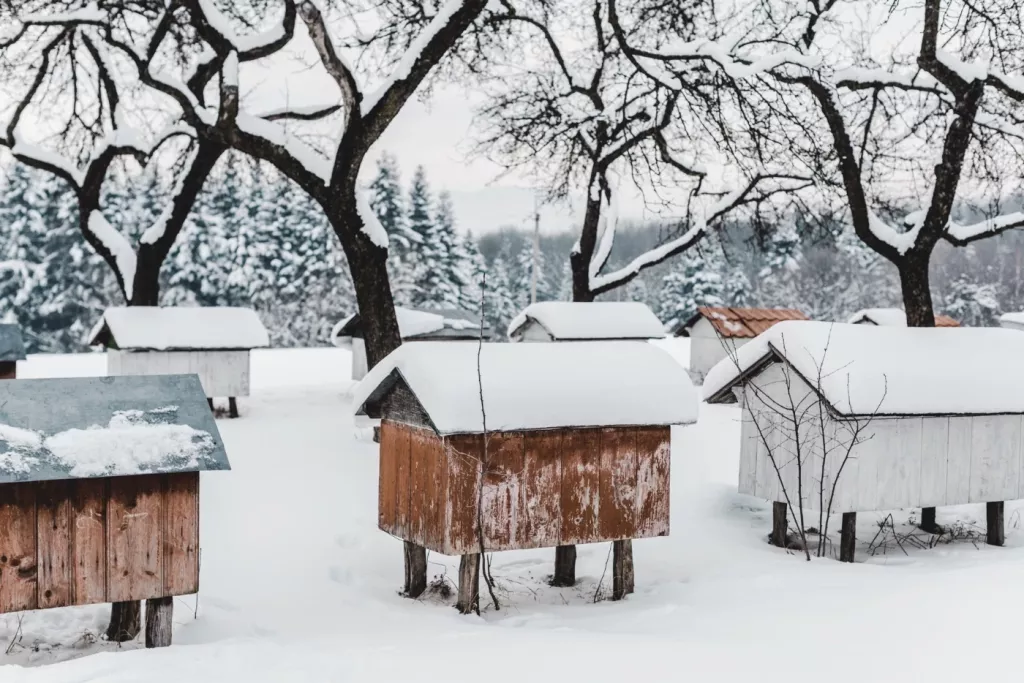
Let's Prepare Weak Beehives to Overwinter
Tip #1: Inspect the weak beehive for signs of damage
Before winter arrives, it's crucial to inspect your beehive to ensure it's in good shape for the cold months ahead. Look for signs of damage that might make it difficult to maintain a stable internal temperature. Remember to check for any leaks that could cause moisture problems, as moisture can lead to mold and mildew growth as well as wood rot. Repair any damages you find during the inspection process.
Tip #2: Ensure adequate food supply for the bees
Bees require a sufficient amount of food to survive the winter months. To prepare their hive for winter, make sure the colony has a sufficient supply of stored honey, which is their primary food source. If the honey supply is low, you may need to provide supplemental feeding in the form of sugar syrup or specially made bee "candy" to help them make it through the winter. Monitor the food levels throughout the season and replenish as necessary.
Have a plan in place for helping your weak beehives recover during the spring. Supplemental feeding provides extra nutrition that will help them build up their strength and population.
- Sugar syrup: Providing a 1:1 sugar-to-water ratio in the early spring can stimulate brood production and support colony growth. As the temperatures rise and natural nectar sources become available, you can reduce the frequency of feeding.
- Pollen substitutes: Many beekeepers use pollen substitute patties to provide additional protein resources during the early spring. Place these directly on the frames, close to the cluster, for easy access.
Remember to monitor your hives regularly and adjust the feedings based on their consumption and available nectar sources.
Tip #3: Control pests and disease of the beehives

Keeping your hive free of pests and diseases is crucial for the overwintering process. Periodically check for common bee pests such as the varroa mite or wax moth. If you notice an infestation, treat it promptly to avoid any further colony damage.
Equally important is to watch for signs of diseases like American or European foulbrood that might weaken the hive even more. Detecting and addressing the issue early on will give your weak beehives a higher chance of survival through the colder months. Consider installing a mouse guard to prevent rodents from entering and causing damage to the hive during the winter.
Tip #4: Combine weak bee colonies
Combining weak bee colonies can help increase their strength and improve their chances of overwintering successfully. There are two popular methods recommended for combining weak colonies: the paper method and the nucleus method.
Paper method to combine weak colonies
The paper method involves placing a sheet of newspaper between the weaker colony and the stronger one, allowing them to gradually mingle.
- First, inspect both colonies and make sure the queens are healthy and present.
- Place a sheet of newspaper with small slits cut into it on top of the weaker colony's frames.
- Set the stronger colony on top of the newspaper.
- Give the bees some time to chew through the newspaper, allowing the two colonies to slowly combine.
This process can take a few days, but it helps to prevent any fighting between the two colonies as they get accustomed to each other's scent.
Nucleus method strengthens weak colonies
The nucleus method is another way to strengthen weak colonies by transferring a few frames of brood and bees from a stronger colony into a nucleus box, which is then combined with the weaker colony.
- Inspect the stronger colony and identify a few frames with brood and bees.
- Gently shake off any bees from these frames and put them back into the stronger colony's hive.
- Move the selected frames into a nucleus box, making sure to maintain the same orientation as they were originally.
- Place the nucleus box near the weaker colony's entrance for a few days, allowing the bees to get used to each other's scent.
- Finally, combine the nucleus box with the weaker colony.
Tip #5: Provide the beehive insulation and ventilation
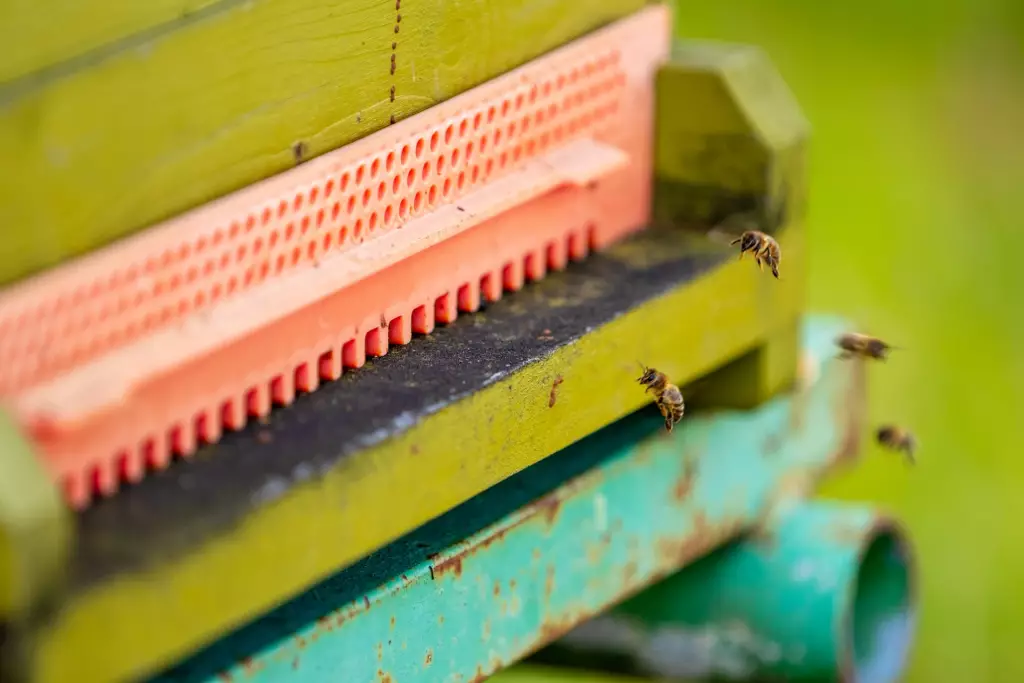
Wrapping your beehive can help protect it against harsh winter conditions. Some popular insulating materials include rigid Styrofoam insulation, black cardboard wraps, fiberglass encased in black plastic, and concrete curing blankets. When selecting a wrap, consider its effectiveness in maintaining warmth, while still providing enough ventilation.
Tip #6: Control moisture using a moisture board
Moisture control is essential when overwintering your beehive. One effective method for preventing excess moisture buildup is the use of a moisture board. By placing a moisture board on top of the feeding shim or super and adding a sheet of insulation before the outer cover, you can help regulate humidity levels within the hive. Insulation can provide additional warmth, while the moisture board wicks away humidity through its sides.
Proper ventilation is crucial for maintaining a healthy hive environment. While it's important not to provide too much ventilation at the top of the hive, as this can result in heat loss, ensuring some airflow at the base is necessary for oxygenation and the expulsion of CO2. Regularly check your hive's ventilation to ensure optimal conditions are maintained throughout the winter months.
Tip #7: Check on the bees health and safety
During the winter, it's essential to periodically check on your beehives to ensure their health and safety. A good practice is to inspect for diseases and pests to prevent any complications. Keeping the hive dry and draft-free is crucial for successful overwintering, as moisture can cause wood rot, reduce insulation, and promote mold growth.
Remember to maintain proper ventilation and keep hive entrances clear throughout the winter to prevent water buildup inside the hive. Ventilation is critical for the survival of overwintering bees, as they produce carbon dioxide and water vapor during metabolism and respiration within the colony.
Tip #8: Monitor temperature of 68–95°F inside the hive
The temperature inside the beehive is crucial for the bees' survival during the winter months. Bees form a vibrating cluster with the queen and the youngest bees at the center, maintaining a temperature between about 68 and 95°F (20 and 35°C). Monitoring the temperature of the cluster can help you ensure they're staying warm enough.
Here are some essential tips for successful temperature monitoring:
- Use a thermometer or temperature probe to check the cluster temperature periodically.
- Avoid opening the hive too often, as it may cause unnecessary stress and heat loss.
- Add insulation to the hive, if needed, to help maintain the optimal temperature inside.
It's important to note that each beekeeper must evaluate their own microclimate, taking into consideration factors like precipitation, humidity, temperatures, wind, and sunlight hours. This information will help you adapt your overwintering strategies and maintain proper care for your beehives during the colder months.
Tip #9: Requeen the weak beehive
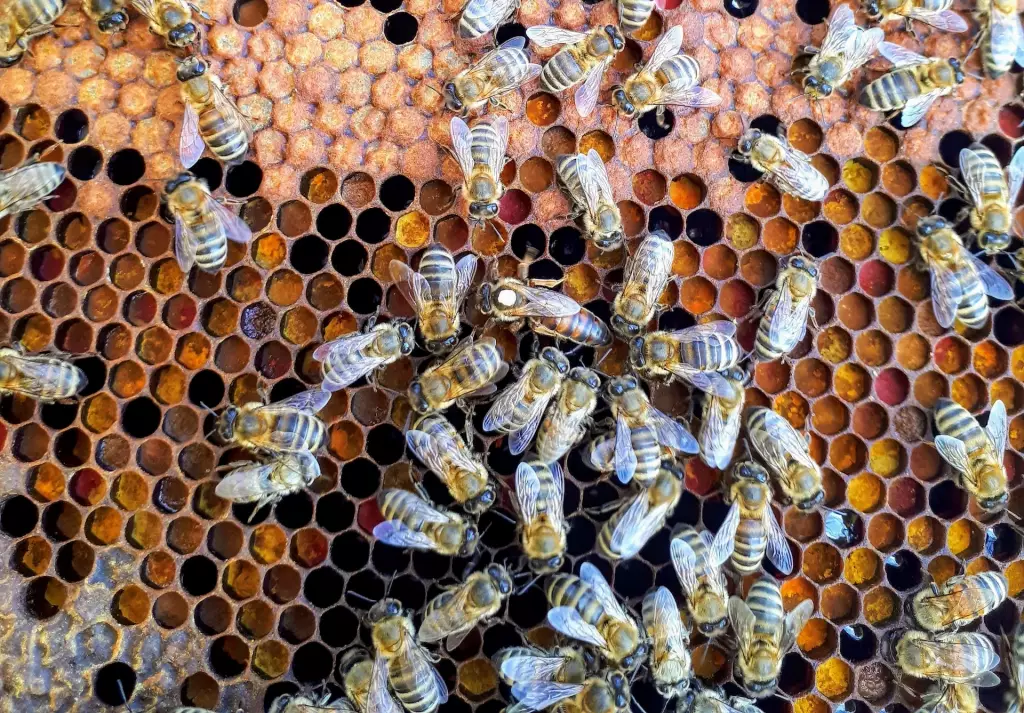
In tandem with supplemental feeding, evaluating your queen's performance is crucial for a successful spring recovery.
- Queen presence: During your early spring inspections, confirm the presence of a queen by looking for larvae and eggs in the hive. If you can't locate her or evidence of her brood, consider replacing her.
- Brood pattern: Inspect the brood pattern for uniformity and compactness. A good queen will lay eggs in a tight, consistent pattern. If the brood pattern is spotty or irregular, it's a sign that your queen might not be performing well, and you may need to replace her.
What is Considered a Weak Beehive?
Common signs of weakness in beehives
One of the first steps to successfully overwintering weak beehives is recognizing the signs that your beehive may be struggling. Some common indications of weakness include:
- Reduced bee activity around the entrance
- Smaller brood patterns
- Less stored honey and pollen
- Presence of pests or diseases
Monitor bee colony numbers

Another important factor in determining the strength of your beehive is monitoring colony numbers. A strong colony will have a larger population of bees, which increases their chances of survival during the winter. Here are a few tips for keeping track of your colony's numbers:
- Regular inspections: Periodically inspect your beehive to assess the overall size and health of the colony. Pay special attention to the number of worker bees, brood, and the presence of a healthy queen.
- Combining weak colonies: If you have multiple hives, consider combining two weak colonies into one stronger hive for the winter. This will increase the overall bee population and improve their chances of survival.
- Mite control: Pests like Varroa mites can weaken your colony, so it's crucial to implement mite control methods before winter arrives.

